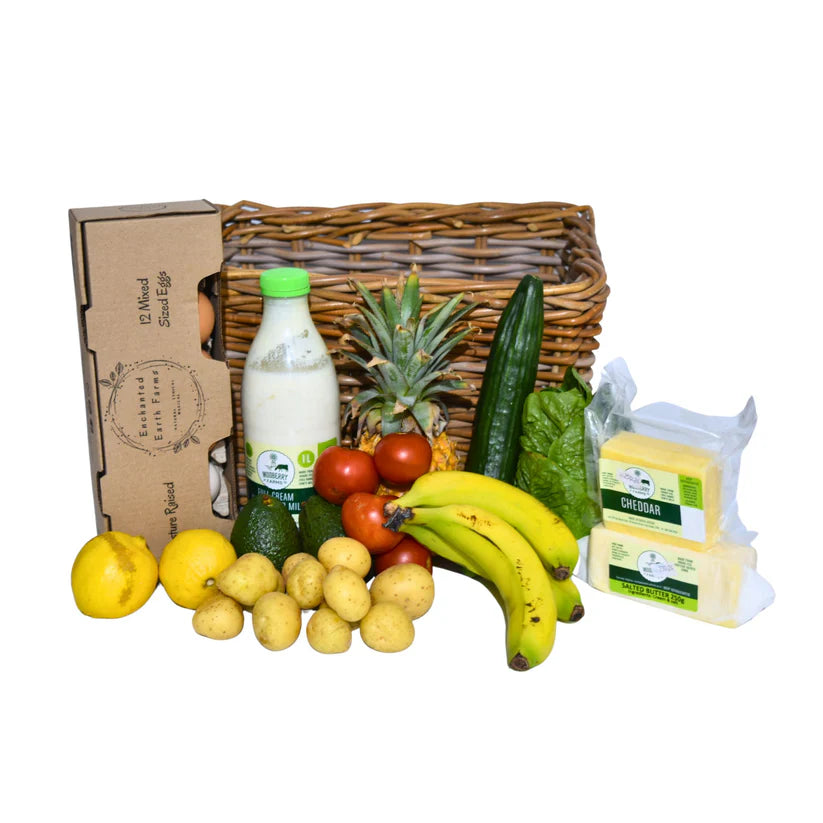Article Summary:
- GMOs (genetically modified organisms) are not allowed in organic food production, which follows strict guidelines to maintain natural and sustainable farming practices, ensuring that organic foods remain GMO-free.
- Organic certification, such as the USDA Organic seal, along with Non-GMO Project Verification, are crucial indicators that a product is free from GMOs, supported by rigorous standards and independent testing.
- Consumers can ensure they are buying non-GMO organic products by looking for certification labels, reading ingredient lists, shopping at trusted retailers, using online resources, and buying directly from farmers who practice organic farming.
The debate over genetically modified organisms (GMOs) and organic food has intensified as more consumers seek clarity on what they are eating. One question that frequently arises is whether organic food can contain GMOs. Understanding the distinction between these two categories is essential for making informed dietary choices. This article will delve into the core principles of organic certification, explain what GMOs are, explore the regulations governing organic labels, and address common controversies and misconceptions about GMOs in organic foods. By the end, you'll have a clearer picture of how to ensure that the organic products you purchase are truly free from GMOs.
What Are GMOs and How Do They Differ from Organic Foods?
Genetically modified organisms (GMOs) are plants, animals, or microorganisms whose genetic material has been altered in ways that do not occur naturally through mating or natural recombination. This process involves inserting, deleting, or modifying genes using biotechnology to achieve specific traits, such as resistance to pests, diseases, or environmental conditions, or to enhance nutritional content. The most common GMO crops include soybeans, corn, cotton, and canola, which are often engineered for herbicide tolerance or insect resistance.
In contrast, organic foods are produced through farming practices that emphasize the use of natural substances and processes. Organic farming prohibits the use of synthetic fertilizers, pesticides, and GMOs. Instead, it relies on crop rotation, green manure, composting, and biological pest control to maintain soil health and ecosystem balance. Organic livestock must be raised without antibiotics or growth hormones and must have access to the outdoors.
The primary difference between GMOs and organic foods lies in their production methods and regulatory standards. Organic farming strictly avoids genetic modification, focusing on sustainability and environmental stewardship. GMOs, on the other hand, utilize advanced genetic techniques to create specific desirable traits in crops and animals. These differing approaches reflect broader philosophical and practical differences in agricultural practices and food production.

Shop Organic Red Baby Cabbage at Orchard Food
Understanding these differences is crucial for consumers who prioritize certain values and practices in their food choices. Those who choose organic foods often do so to avoid synthetic chemicals and GMOs, support sustainable farming practices, and reduce their environmental footprint. Conversely, supporters of GMOs argue that genetic engineering can lead to increased agricultural productivity, improved nutritional content, and reduced reliance on chemical inputs. By comprehending the distinct characteristics and implications of GMOs and organic foods, consumers can make more informed decisions aligned with their personal values and health goals.
Regulations and Enforcement of Organic Labels
The regulations and enforcement of organic labels are essential to ensuring the integrity and trustworthiness of organic products in the marketplace. In the United States, the organic certification process is overseen by the United States Department of Agriculture (USDA) through the National Organic Program (NOP). This program establishes strict guidelines that must be followed by farmers, processors, and handlers of organic products to use the USDA Organic label.
To be certified organic, agricultural products must be produced and processed using approved methods that integrate cultural, biological, and mechanical practices that foster cycling of resources, promote ecological balance, and conserve biodiversity. The use of synthetic fertilizers, sewage sludge, irradiation, and genetic engineering (GMOs) is prohibited. Organic livestock must be raised in living conditions accommodating their natural behaviors, fed 100% organic feed, and not given antibiotics or hormones.
The certification process involves several steps. Farmers and processors must apply to a USDA-accredited certifying agent, who then reviews the operation’s practices to ensure they comply with organic standards. This review includes a comprehensive plan detailing all aspects of production, including soil and crop management, livestock care, and record-keeping. After the initial review, the certifying agent conducts an on-site inspection to verify that the operation adheres to organic standards. Once certified, operations must undergo annual inspections to maintain their certification.
Enforcement of organic standards is critical to maintaining consumer trust. The USDA and accredited certifying agents conduct periodic unannounced inspections and residue testing to ensure compliance. If a certified operation is found to be in violation of organic standards, it may face penalties such as fines, suspension, or revocation of its organic certification. Consumers can also file complaints if they suspect non-compliance, which the USDA investigates thoroughly. These rigorous regulations and enforcement mechanisms help ensure that products labeled as organic meet consistent and reliable standards, providing assurance to consumers about the authenticity of their organic purchases.
Controversies and Misconceptions About GMOs in Organic Foods
Controversies and misconceptions about GMOs in organic foods are pervasive and often fueled by misinformation and differing perspectives on agricultural practices. One of the primary misconceptions is that organic foods can contain GMOs, which is not accurate. According to strict USDA organic standards, the use of genetically modified organisms (GMOs) is prohibited in all stages of organic production and handling. This means that organic farmers cannot plant GMO seeds, organic livestock cannot consume GMO feed, and processed organic foods cannot contain GMO ingredients.
Despite these regulations, there is controversy surrounding the potential for GMO contamination in organic crops. Cross-pollination and accidental mixing of GMO and non-GMO crops can occur, especially in regions where both types of farming are prevalent. This has led to debates over the integrity of organic labeling and the effectiveness of measures to prevent contamination. Critics argue that the current coexistence of organic and GMO farming increases the risk of unintended GMO presence in organic products, which can undermine consumer trust. Proponents of organic farming emphasize the need for stricter buffer zones, dedicated equipment, and rigorous testing to minimize these risks.
Another source of controversy is the perception that GMOs are inherently harmful, which contrasts with the stance of many scientific organizations that deem GMOs safe for consumption. The organic movement often positions itself in opposition to GMOs, highlighting concerns about environmental impact, corporate control of the food supply, and long-term health effects. This has led to a polarized public view, with some consumers choosing organic products specifically to avoid GMOs, based on the belief that organic foods are healthier and more environmentally friendly.
Misconceptions also arise from marketing and labeling practices. Some food products may be labeled as “non-GMO” even if they are not certified organic, creating confusion about what these labels signify. Non-GMO labels indicate the absence of genetically modified ingredients but do not account for other organic standards, such as the prohibition of synthetic pesticides and fertilizers. This can mislead consumers into equating non-GMO with organic, when in fact, organic certification encompasses a broader range of farming practices and sustainability measures.

Shop 500g Pasture Raised Smoked Back Bacon at Orchard Food
Overall, addressing controversies and misconceptions about GMOs in organic foods requires clear communication and education. Consumers need reliable information about what organic certification entails and how it differentiates from non-GMO labeling. Transparency from producers, rigorous enforcement of organic standards, and ongoing dialogue between stakeholders can help resolve misunderstandings and reinforce the integrity of organic labeling.
How to Ensure You Are Buying Non-GMO Organic Products
Ensuring you are buying non-GMO organic products requires a bit of knowledge and attention to detail. Here are some key steps to help you make informed choices; the first step in ensuring your products are non-GMO and organic is to look for certification labels. In the United States, the USDA Organic seal is the most reliable indicator that a product meets organic standards, which prohibit the use of GMOs. Similar certifications exist in other countries, such as the European Union's organic logo and Canada's Organic Biologique label. These certifications guarantee that the products have been produced according to rigorous standards that exclude GMOs, synthetic pesticides, and fertilizers.
In addition to organic certification, the Non-GMO Project Verification seal is a helpful indicator that a product does not contain genetically modified organisms. This seal, represented by a butterfly icon, indicates that the product has been independently tested and verified to meet strict non-GMO standards. While organic certification already excludes GMOs, having both the USDA Organic seal and the Non-GMO Project Verification provides extra assurance of the product's integrity.
Reading the ingredient lists and product information can provide additional assurance that you are buying non-GMO organic products. Look for clear labeling that specifies the product is certified organic and free from GMOs. Ingredients sourced from high-risk GMO crops, such as corn, soy, canola, and sugar beets, should be clearly identified as organic or non-GMO. This step is particularly important for processed foods, where GMO ingredients can be more prevalent.
Choosing retailers known for their commitment to organic and non-GMO products can simplify your shopping experience. Natural food stores, co-ops, and certain sections of major grocery stores often have stringent sourcing policies and provide a wide range of certified organic and non-GMO products. Many of these retailers also offer educational resources and staff knowledgeable about product sourcing, which can help you make informed choices.
Several apps and online resources can help you identify non-GMO and organic products. The Non-GMO Project, for example, offers a product verification program with a searchable database of verified products. Similarly, the USDA Organic Integrity Database provides information on certified organic producers and products. These tools can be valuable for verifying product claims and finding reliable sources of non-GMO organic foods.
Purchasing directly from farmers who practice organic farming is another effective way to ensure you are getting non-GMO organic products. Farmers' markets, community-supported agriculture (CSA) programs, and farm stands often provide opportunities to speak directly with growers about their farming practices. Building relationships with local farmers can give you greater transparency and confidence in the products you buy.
Staying informed about the latest developments in organic and non-GMO standards, labeling practices, and agricultural trends can help you make better purchasing decisions. Following reputable sources of information, such as organic certification bodies, non-GMO advocacy groups, and food safety organizations, can keep you updated on issues that affect the integrity of organic and non-GMO products.
By following these steps, you can confidently navigate the marketplace and ensure that you are buying products that align with your values and dietary preferences. Prioritizing certified organic and non-GMO products supports sustainable farming practices and contributes to a healthier food system.










